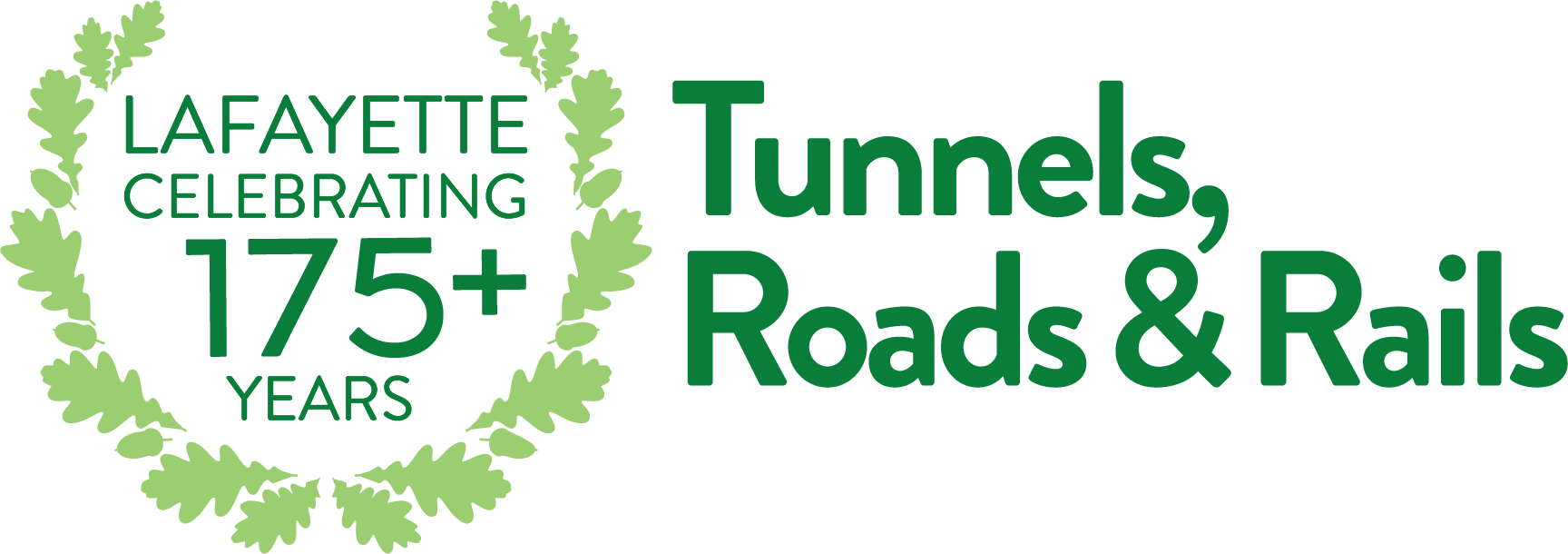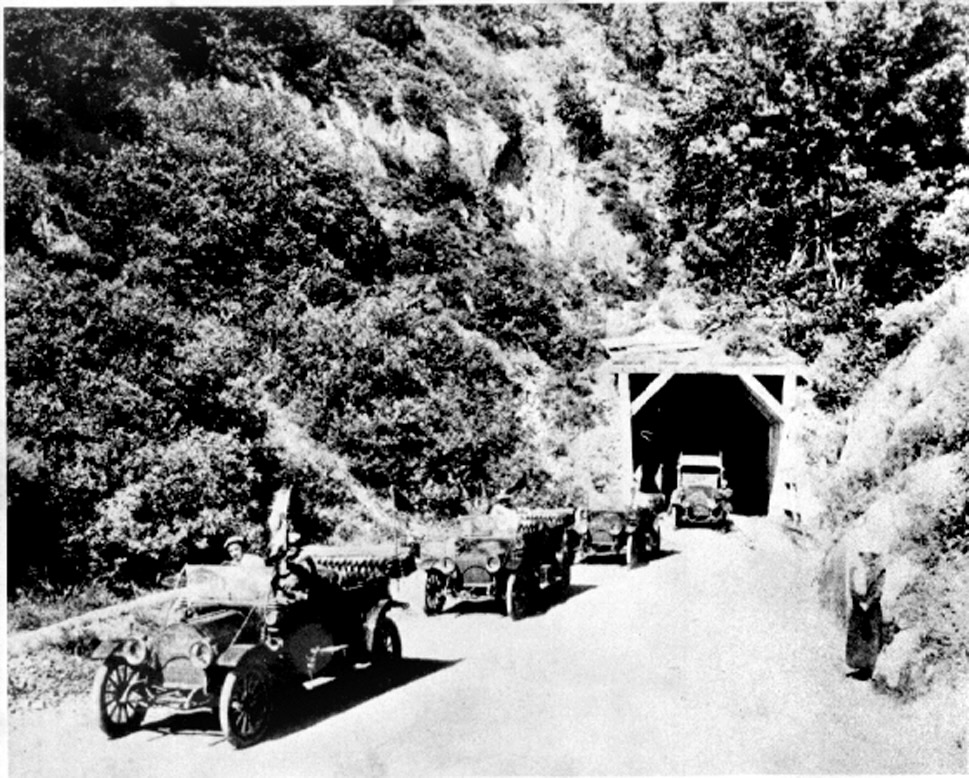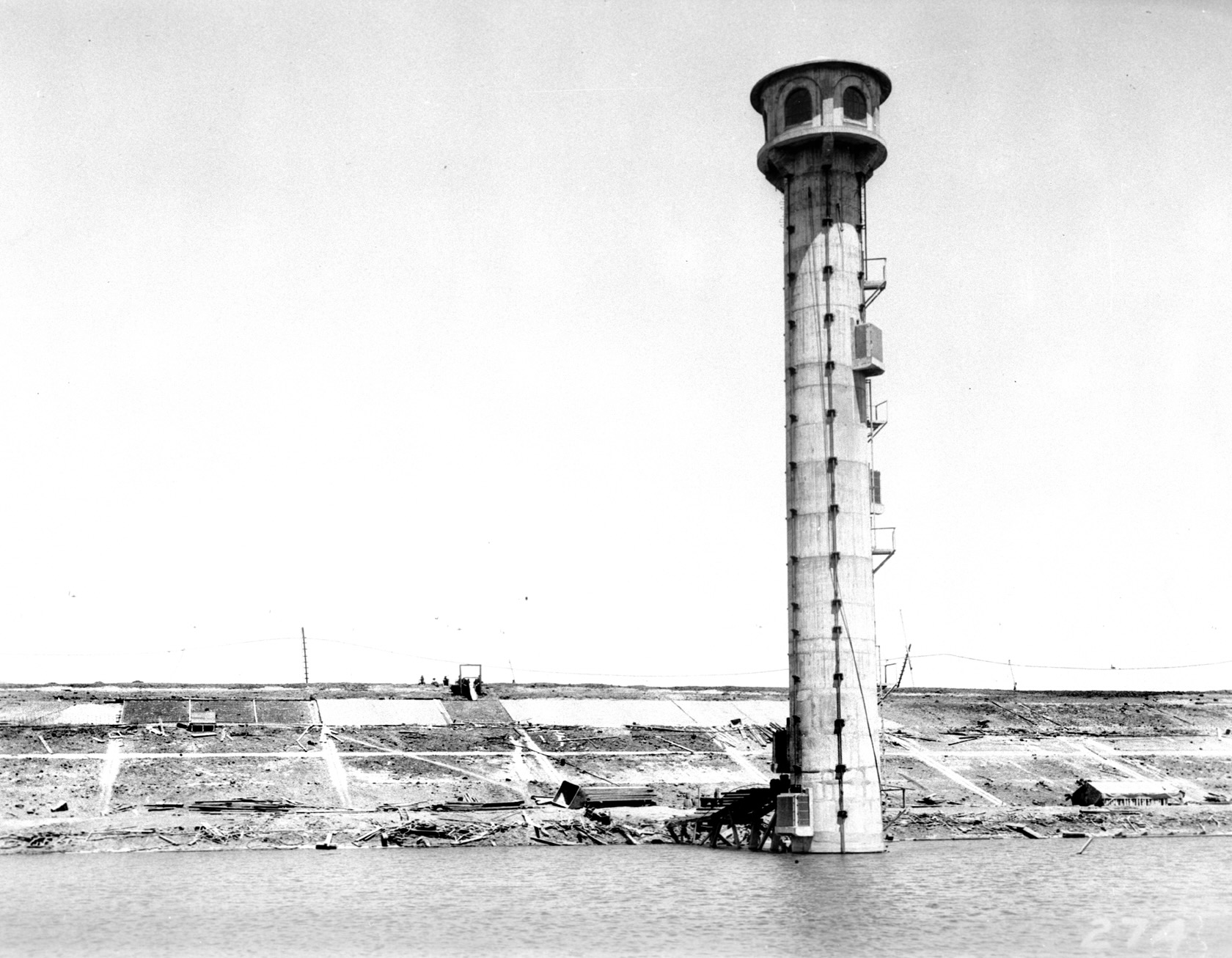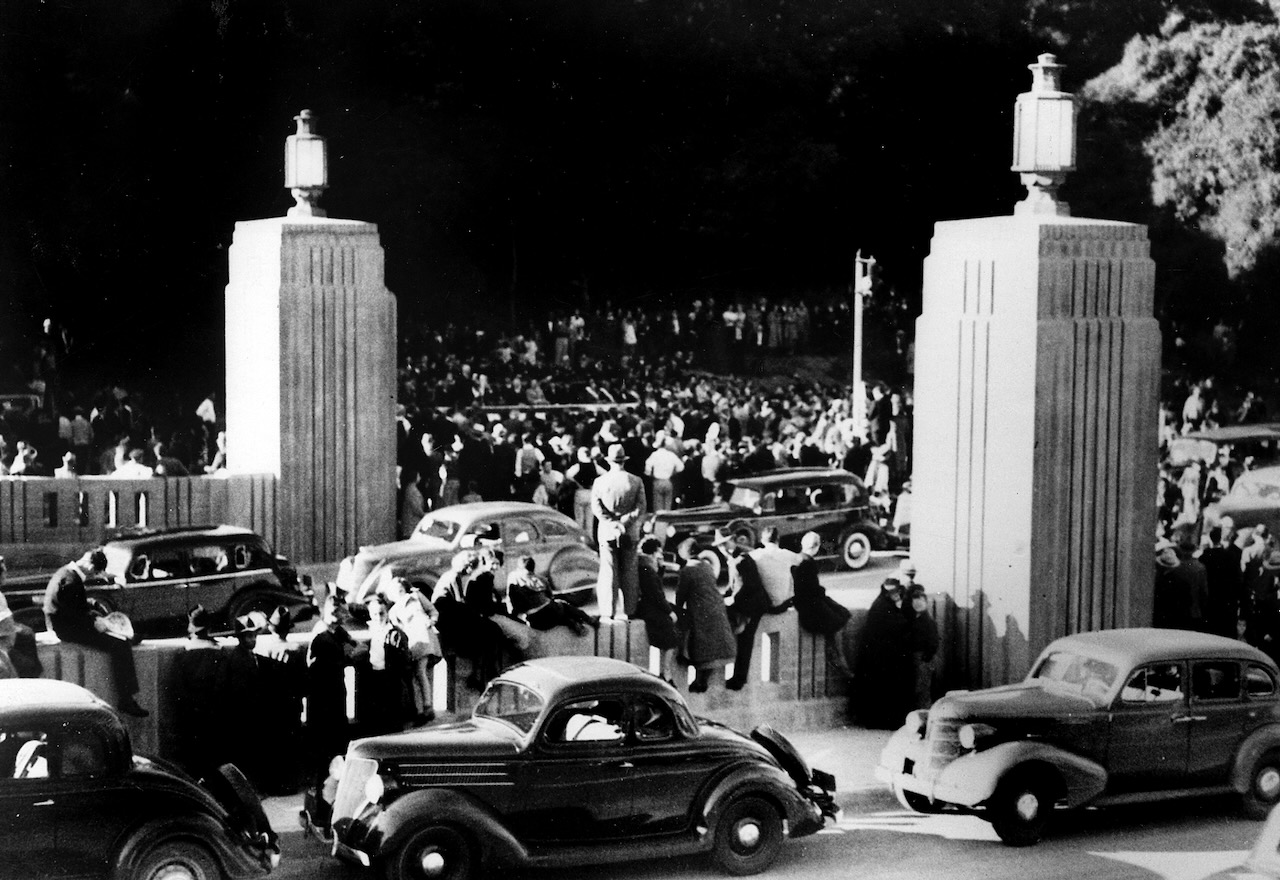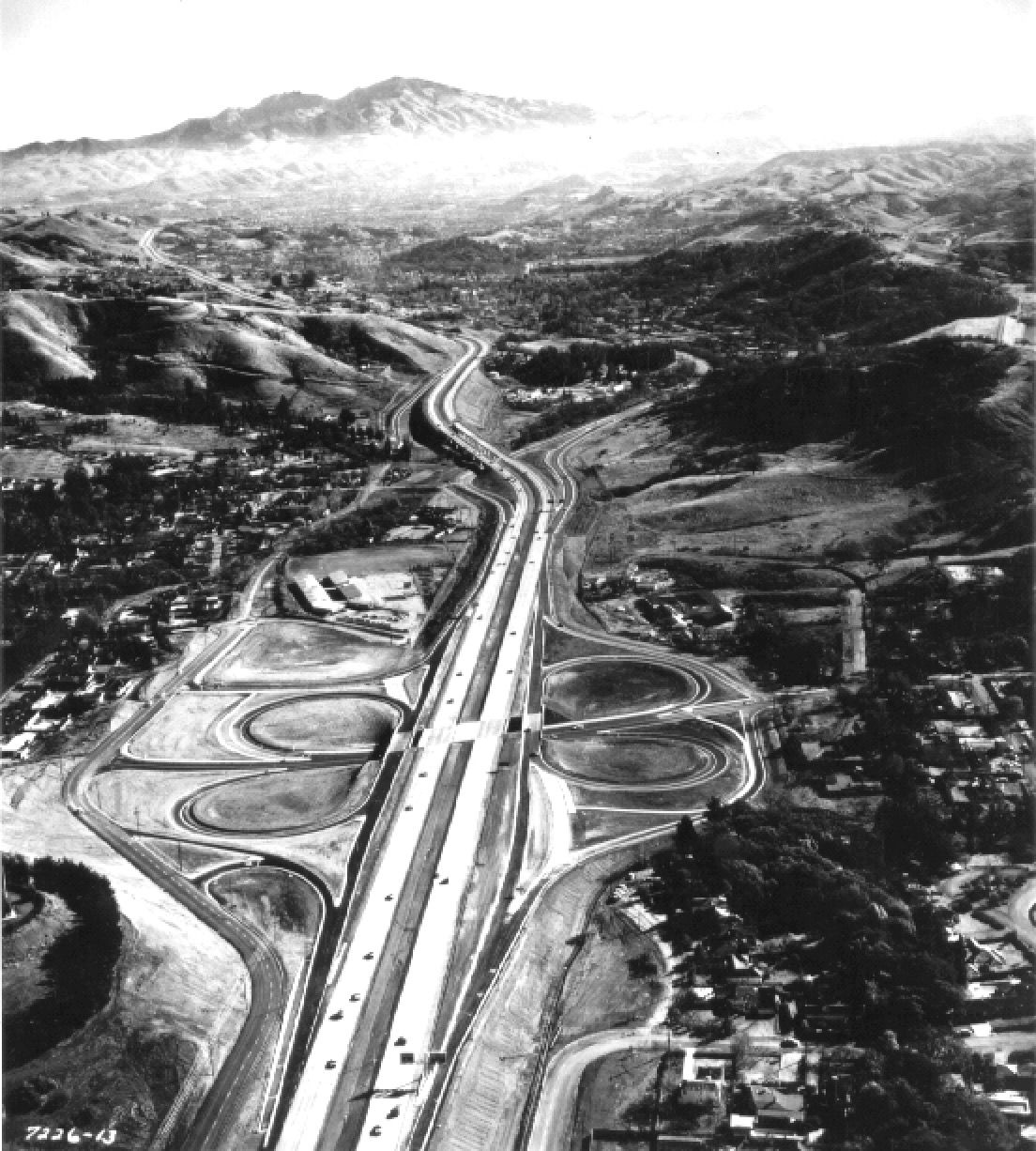Lafayette was at the crossroads of four towns: Oakland, Martinez, Walnut Creek, and Canyon/Moraga. Lafayette residents traveled to Oakland for its many stores and amenities, for medical care, and to sell hay, fruits, and vegetables. The first roads to Oakland went over the top of the hills, a 1,000 foot climb. The Kennedy Tunnel was opened in 1903.
Roads in the early days were dusty in summer and full of ruts, sometimes impassable, in winter. All year long there were pot holes. The county paved Tunnel Road from the tunnel to Walnut Creek in 1916. Slowly other roads were rocked and paved.
In 1937, a new tunnel, the Broadway Low Level Tunnel, opened 310 feet below the Kennedy Tunnel. A third bore opened in 1964, a fourth bore in 2013. Today all four bores are collectively called the Caldecott Tunnel. Tunnel Road eventually became Mt. Diablo Boulevard.
In 1903, a tunnel was built above the current location of the Caldecott Tunnel in the next canyon south of Claremont Canyon. The tunnel was approached by a new road called Tunnel Road, which started at the top of Ashby Avenue in Berkeley. The tunnel was called the Broadway Tunnel for the road that accessed it, or the Kennedy Tunnel for the old toll road and local farm near the west portal. It was located about 220 feet above the current Caldecott Tunnel and 320 feet below the summit. It was 1,040 feet long, 17 feet wide, and built with timber supports. It could barely accommodate two-way traffic. The tunnel had no interior lights until electricity was installed in 1914.
The Lafayette Improvement Club (LIC) was responsible for forming a water district that would bring Mokelumne River water to town. Lewis Rodebaugh, Col. M.M. Garrett, M.H. Stanley, and George Meredith worked with the LIC to form the Lafayette County Water District, and Lafayette eventually became part of the East Bay Municipal Utility District (EBMUD). A dam was designed at the west end of town to control flooding and provide water, and construction began in 1927. In September 1928 when it was about 80% complete, the dam settled over a 10 day period, causing huge cracks to appear. All work stopped for three years as the dam was redesigned with a shorter, wider aspect. Construction was completed in 1933.
In 1928, the Oakland, Antioch & Eastern Railroad became the Sacramento Northern Railroad. In the early days, the trains were single cars, and there were special observation cars on the express trains. The electric railroad, with a 600 volt system, began service through Lafayette in 1913. The West Lafayette Station was at the end of School Street. In the early days of service, a special 3:00 am train waited to take home Town Hall partiers who had come from Walnut Creek or Oakland to dance the night away. Special trains were also in service to take picnickers to Redwood Canyon during the summer months, on weekends, and on holidays.
Thousands of people lined the area around the western portal to witness the dedication ceremony of the opening of the Broadway Low Level Tunnel on December 5, 1937. For two hours, more than 10,000 motorists backed up to Broadway and College Avenues to await the signal that opened the new bores linking the two counties. At 2:30 pm, the official party led by California Governor Frank F. Merriam, traveled through the tunnel to the Contra Costa side for the final part of the dedication. Governor Merriam completed his speech from the Contra Costa platform, urging that the policies of highway construction be sustained and that gasoline tax money be used for such purposes in the future. More than 4,000 motorists drove through the tunnel in the first hour it was open.
Highway 24 Acalanes Road interchange is shown under construction in the 1960s. Highway 24 was designated in 1932 in conjunction with the ongoing construction of the Broadway Low Level Tunnel (renamed the Caldecott Tunnel in 1960) which opened in 1937, connecting with the new Eastshore Highway and the approaches to the new Bay Bridge by way of Tunnel Road and Ashby Avenue through Berkeley west of the Berkeley Hills, and routed along Mount Diablo Boulevard through Contra Costa County east of the hills. Before either the bridge or the tunnel were completed, Highway 24 was provisionally routed starting from downtown Oakland at the major intersection of San Pablo and Broadway, which was also the terminal point of US 40 and State Highway 17. From this point, Highway 24 proceeded northward along Broadway to College Avenue, then along College to Claremont Avenue, up Claremont to Tunnel Road, then up into the Berkeley Hills on Tunnel Road to the old Intercounty Tunnel (also called the Kennedy Tunnel), through the tunnel into Contra Costa County.
